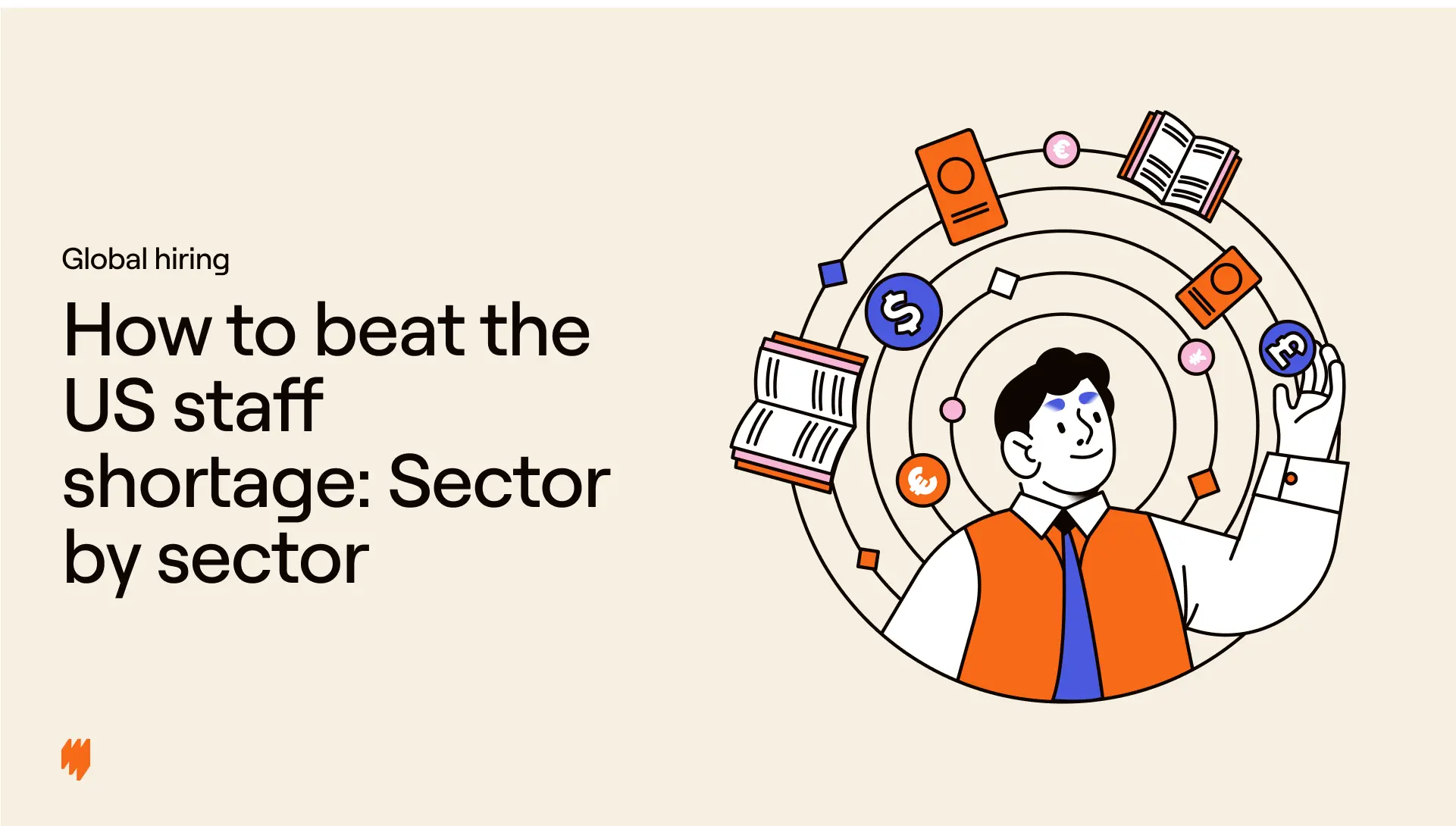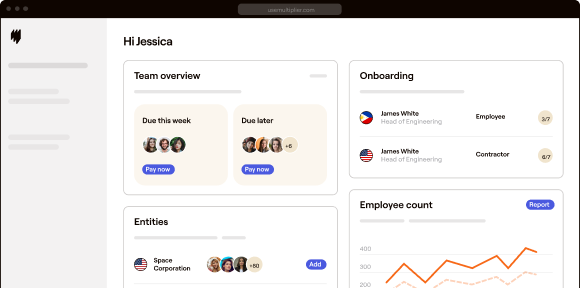The staff shortage in the US is reaching an all-time high; in June 2024, there were a record 8.4 million job vacancies.
Companies are slowed down by not having people with the right skills in place. As technology Co-Founder April Wong points out, staff shortages significantly hamper operational efficiency. “Existing employees face increased workloads resulting in stress and burnout, further diminishing productivity and heightening turnover rates,” Wong says. In these circumstances, “innovation can stagnate.”
In this article, we talk to experts from across sectors, looking at the strategies to help you beat staff shortages and bridge skills gaps.
We also look closely at some of the industries that have been most affected by staff shortages: construction, manufacturing, and technology. However, the tactics we explore are universal. Working in any sector, you could use these tips to strengthen your team with the skills you need for the future.
What’s behind the talent gap?
The aging workforce
People are exiting the workforce en masse but, in our aging population, there aren’t enough young workers to replace them.
In the USA alone, 10,000 people reach retirement age every day and we are also still seeing the effects of the early retirement spike caused by the pandemic.
At the same time, the workers that are entering the workforce are showing less interest in particular industries. According to Specialist Construction Consultant Shawna Armstrong, schools tend to push students toward college and away from trade careers. “This next generation is unaware of how much opportunity there is in construction,” Armstrong says.
The growing skill gap
The global talent crunch is a term used to describe the mismatch between the skills employers are looking for and those in their immediate talent pool.
As artificial intelligence continues to take over parts of the workforce, there’s increased demand for people who can work alongside these systems. The problem is that many workers lack the soft skills necessary to add real value to these new workflows and others haven’t yet had the training needed to be able to work with the tools directly.
An increased demand for flexibility
According to research from Randstad, employees now rank work-life balance above pay when choosing a job. As Wong points out, this shift occurred during the pandemic. “Post-COVID-19, quality of life has become a significant consideration for potential employees,” she says, “Many are now gravitating towards regions with lower living expenses and less traffic congestion or opting for remote/flexible working.”
The view of the staff shortages across sectors
Though almost every industry is experiencing staff shortages because of the reasons outlined above, some sectors have been hit harder than others. Here we take a closer look and identify some of the specific strategies experts suggest could resolve the issue.
Construction
Research suggests that the U.S. construction industry will need to attract about 500,000 new workers to meet demand in 2024. And labor shortages have been steadily increasing throughout the sector for years as the workforce ages and retires. Right now, more than one in five construction workers is aged 55 or over.
Specialist Construction Consultant Shawna Armstrong encourages being open to training younger construction staff: Companies need to ask: “Are we willing to train people without experience? Do we have a quick and easy hiring process?”

Manufacturing
At the start of 2024, there were 622,000 unfilled manufacturing jobs across the US. This is mostly caused by the increased automation across the industry — there are few workers on the market with the skills needed to operate and maintain advanced machinery and software systems.
Manufacturing Recruiter Michelle Kovacich offers a solution to this problem: “Partnering with educational institutions, vocational training programs, and niche recruiters can help cultivate a pipeline of skilled workers.” Through proactive workforce planning, you can predict the skills your company will need in the near future and work with external parties to fill gaps.

Tech
With so many new areas of technology developing in the past decade, each with its own set of specialized skills, US companies are increasingly facing staff shortages. As a result, research suggests businesses could lose $5.5 trillion by 2026.
Further complicating things is the fact these fields are always progressing. Wong says, “The continuous evolution of technology mandates that current employees undergo upskilling to stay relevant which can strain organizational resources and time.”
To overcome tech recruitment challenges, she suggests widening the talent pool to meet skills requirements as and when they arise. “Global hiring gives the flexibility companies need to adapt quickly to changes in different markets, ensuring stability and continuous growth,” Wong says.

Three strategies to attract and retain staff
Ready to tackle skills gaps head-on? Make sure you’ve covered these tactics.
Training programs
By taking on apprentices, providing a stipend for learning and development, and building robust training programs, you can nurture the skills you need rather than searching for them. However, it’s important to develop upskilling and reskilling programs that are aligned with the skills you need in the future as well as right now.
Analyze your top performers and find an objective way to measure the skills you’ll need for the next 3-5 years. That way, you can find hires with the essential abilities and identify areas where you can offer extra training.
Reputation cultivation
With so much competition for skilled talent, companies can stand out by making sure their culture and core values shine through. For example, Wong highlights, “Companies can position themselves as desirable workplaces by showcasing a commitment to innovation, inclusivity, and employee well-being.”
To strengthen your employer branding, make sure to use consistent messaging internally and in your marketing efforts. You should also, as Michelle identifies, designate a team member to “monitor online reputation and actively cultivate your company as an “Employer of Choice.”
Of course, you can’t build a strong reputation without a strong work culture. And this is where the obvious but essential initiatives like work-life integration, benefits, and pay come in.
You can use Multiplier’s global workforce management solution to streamline payroll, benefits, taxes, employment agreements, and more. Build localized benefits packages and issue ESOPs in the same solution as you pay your team.
Global hiring
Many companies are beating the staff shortage by tapping into the global talent pool. A rapidly growing category of global hiring solutions, Employer of Record (EOR), makes it possible to hire, onboard, and manage employees without needing to set up a local entity.
An EOR acts as the legal employer for your international employees, shouldering administrative labor and ensuring compliance with local labor laws. This means you can attract talent looking for flexible and remote work options and build a more diverse team.
Sagar Khatri, CEO at Multiplier, points out how crucial global hiring has been in allowing Multiplier to meet the needs of a global customer base. “A fully distributed setting is the only way I know how to build a business,” he explains. “If we didn’t have Janko from Serbia and Farhad from Mumbai, as well as Eyra from Singapore, we wouldn’t have been as successful.”
More than just an EOR, Multiplier manages the entire process of onboarding, paying, and managing your global team. This means overseeing global payroll, providing visa support, and distributing localized benefits that your employees will love.
Access an all-in-one platform for global workforce management. Speak with one of our team.







